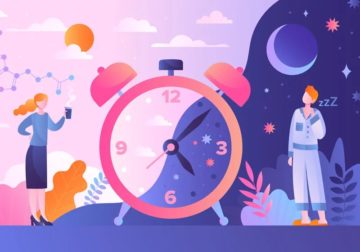Iris Kulbatski in The Scientist:
 The rhythm of life is hardwired into our DNA. More than forty percent of the human genes that code for proteins sync transcription to a twenty-four-hour cycle.1 A small hub of neurons deep inside the brain acts as a timekeeper, translating visual light cues into biomolecular signals that coordinate time on a cellular level.2 The metabolic response to food also regulates biological time. “The feeding-fasting cycle is one of the strongest signals you can send the body to entrain the circadian clock,” said Paula Desplats, an associate professor of neuroscience and pathology at the University of California, San Diego.
The rhythm of life is hardwired into our DNA. More than forty percent of the human genes that code for proteins sync transcription to a twenty-four-hour cycle.1 A small hub of neurons deep inside the brain acts as a timekeeper, translating visual light cues into biomolecular signals that coordinate time on a cellular level.2 The metabolic response to food also regulates biological time. “The feeding-fasting cycle is one of the strongest signals you can send the body to entrain the circadian clock,” said Paula Desplats, an associate professor of neuroscience and pathology at the University of California, San Diego.
The sleep-wake cycle is among the most well-known circadian rhythms in the body and is severely affected in Alzheimer’s disease (AD). “Eighty percent of patients with AD suffer dysregulation or disruption of circadian rhythms, and the obvious clinical manifestations are the sleep-wake reversals,” Desplats said. “These patients are very sleepy during the day, agitated during the night, more confused, and sometimes aggressive.”
More here.
